SCOPTEL IP PBX Software - Sangoma Transcoding Installation¶
Purpose of Document¶
Depending on the Sangoma Hardware Transcoding SKU the solution can support between 30 and 4000 simultaneous G.729 sessions.
Hardware transcoding off loads CPU cycles from the host CPU and does not require software G.729 licenses
Hardware transcoding reduces transcoding delay.
High Compression CODEC’s allow more concurrent calls through Internet connections with modest bandwidth.
Voice Transcoding can reduce costs where bandwidth is expensive and VoIP is desired to further reduce costs and increase mobility.
Example: Sangoma D-150¶
D-150 Box installed in local LAN communicates with SCOPTEL using Ethernet by IP address.
Each D-150 Scales from 30 to 400 simultaneous G.729 sessions and can be ‘stacked’ using a single Base IP Octet
One SCOPTEL server must be configured in SNG-TC server mode
Additional SCOPTEL servers on this network can share the SNG-TC server and D-150 cluster when configured to Connect to remote SNG-TC server
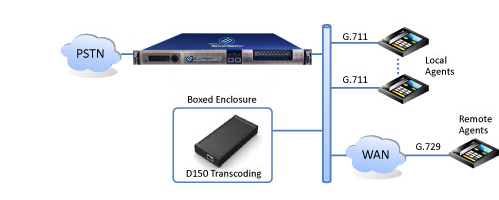
CODEC SUPPORT¶
G.711
GSM-FR
G.722
GMS-EFR
G.722.1 (HD Voice)
G.726
G.729AB
iLBC
Sample Applications¶
Call Centers and Remote Agent Pools
Hosted iPBX / IP Centrex
Distributed PBX
IP Network Peering
SIP Trunking
VoIP Gateways
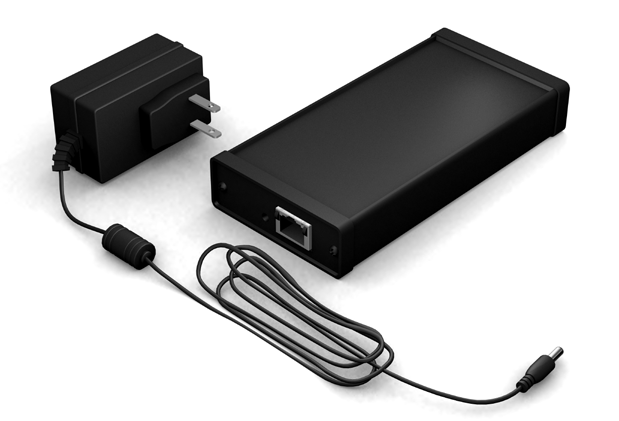
Pre-requisites¶
SCOPSERV-server 2.4.1 package
You must be using minimum version SCOPSERV-telephony 2.6.18-2.rpm
Internet connection to download installation packages
D-150 with Boxed Enclosure

Preinstall tasks:
Switch your running version of Asterisk using these commands depending on which version of Asterisk you wish to use
asterisk-switch –1.8
asterisk-swtich –11
asterisk-swtich –13
Before deciding which version to use its recommended to check the status of each Asterisk release https://wiki.asterisk.org/wiki/display/AST/Asterisk+Versions
Login to the server and navigate to : Server>Packages Manager>Versions Information
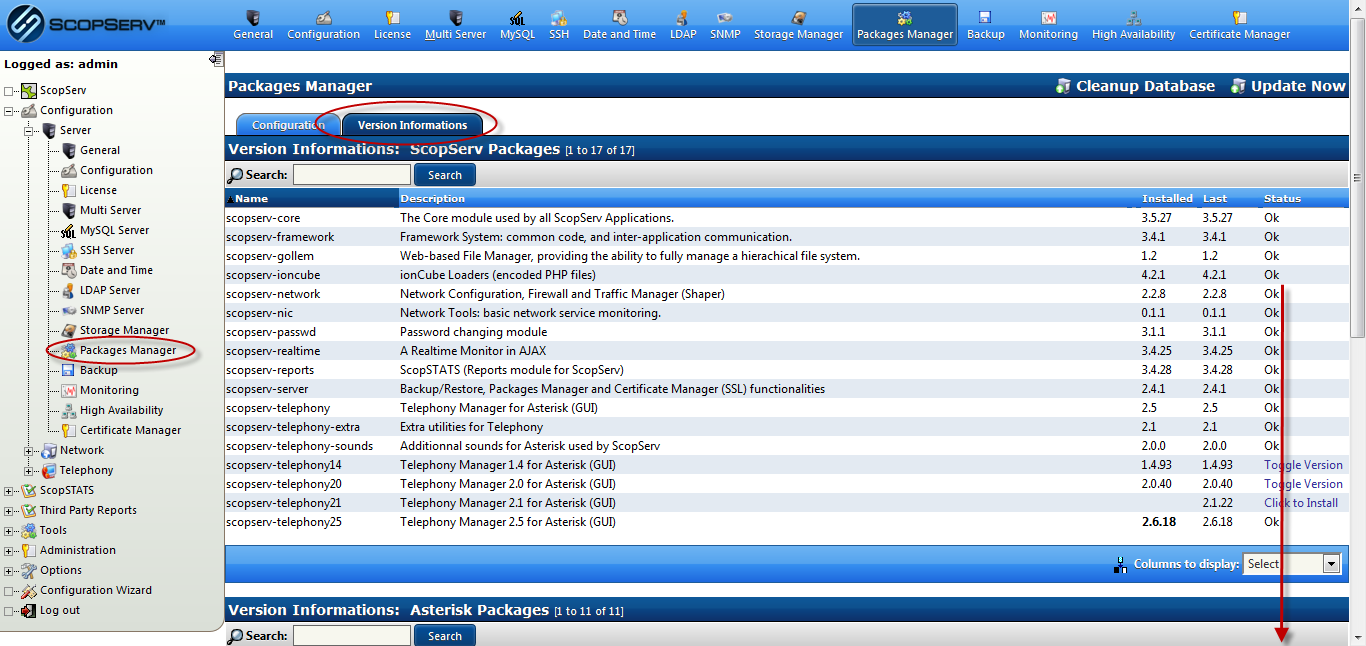
Scroll down until you see wanpipe-sng-tc If the package is not already installed then Click to Install
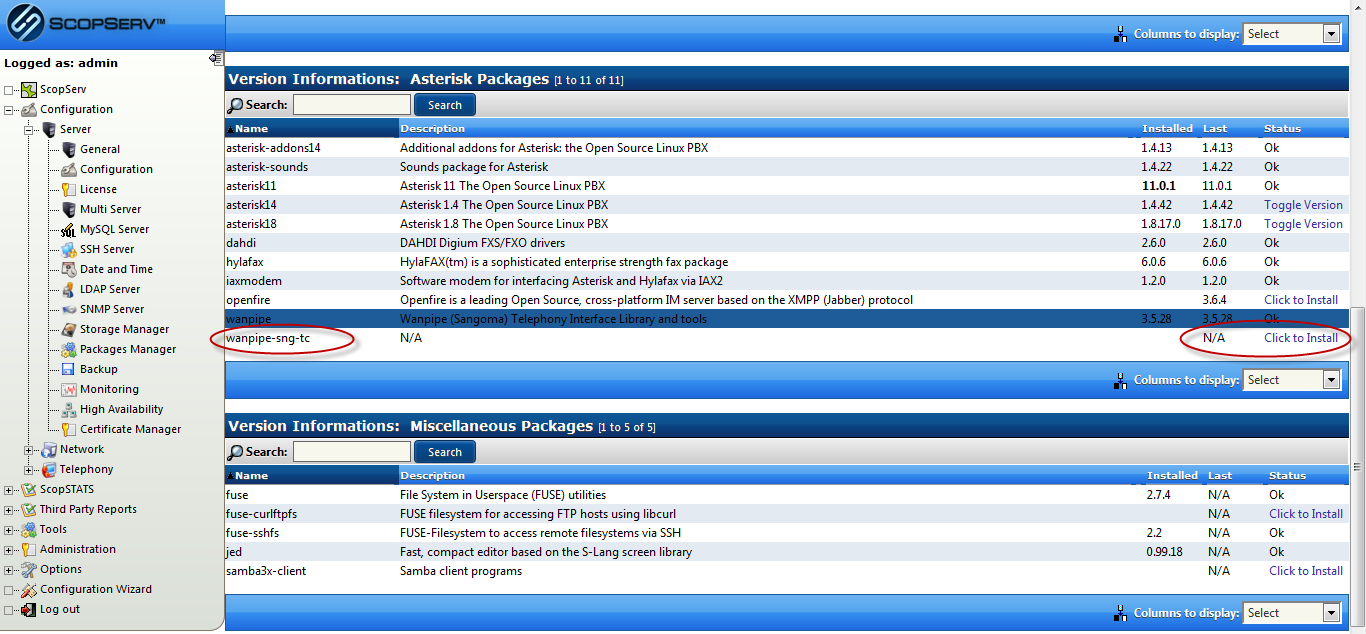
Installation Summary¶
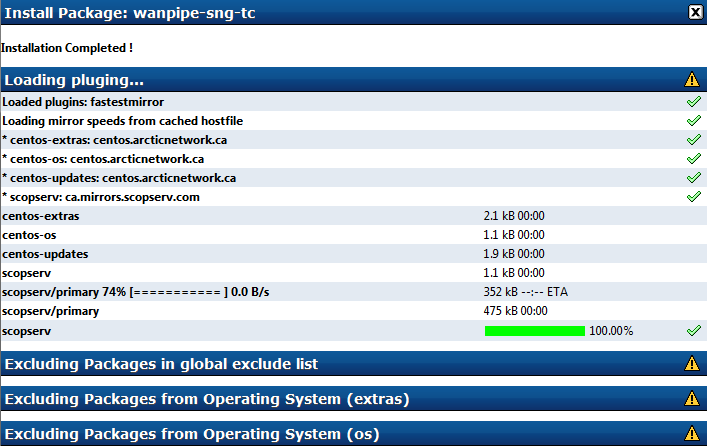
Post Install Commands:
Login as root from a console and type these commands to finish compiling codec_sangoma.so
>>>
cd /usr/src/wanpipe-sng-tc
make clean
make asterisk
make install
>>>
Enabling the SNG-TC server¶
Navigate to Telephony>Configuration>Channels>Media Transcoding and Edit
Enable SNG-TC server? : Yes
Select the Network Interface that matches the location of your D-150
Choose a Base IP Octet that will not conflict with any DHCP scope or static IP address
Choose the desired CODEC’s
Save
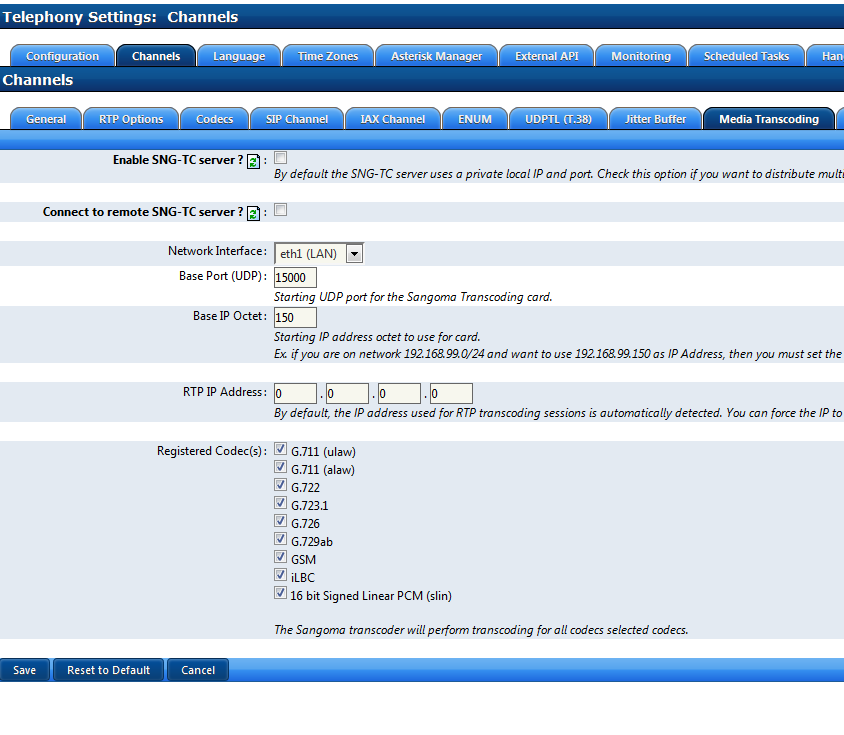
Connect to remote SNG-TC server (optional)¶
This mode allows a remote SCOPTEL to share transcoding hardware
Navigate to Telephony>Configuration>Channels>Media Transcoding and Edit
Server URL: You must enter http://<LAN IP of machine hosting sngtc_server>:<Port of machine hosting sngtc_server>/
RTP IP Address: By default, the IP address used for RTP transcoding sessions is automatically detected. You can force the IP to use by entering the LAN IP or FQDN of SCOPTEL sngtc client.
Choose the desired CODEC’s
Save
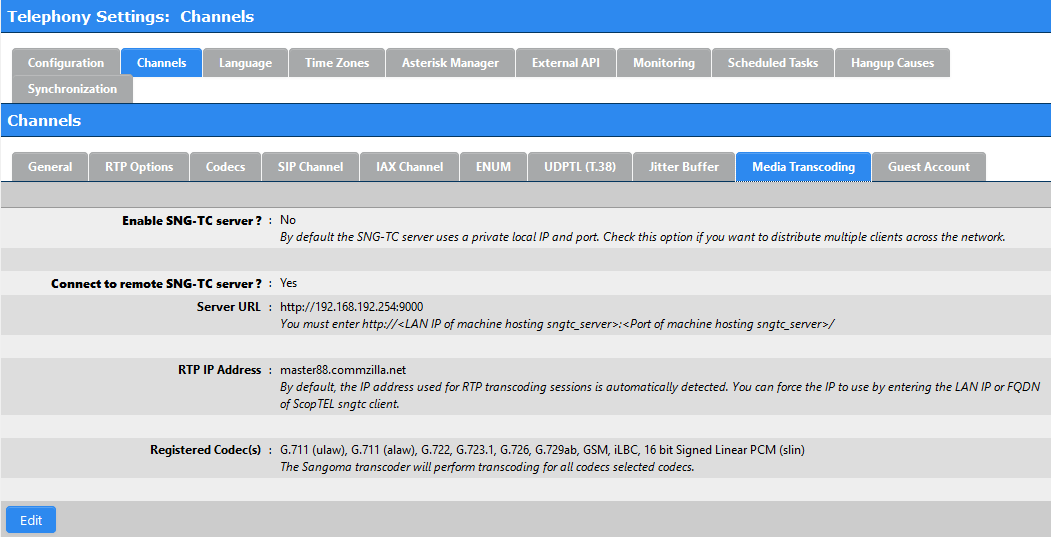
Navigate to Telephony>Configuration>Channels>Codecs
Check the Set Codec Preferred Order? [x]
Check the Set Default Codec selection? [x]
Choose the preferred order and enable the desired Codecs in the list
Ignore the G.729 (Not Installed) warning as this only applies to software CODEC’s
Save
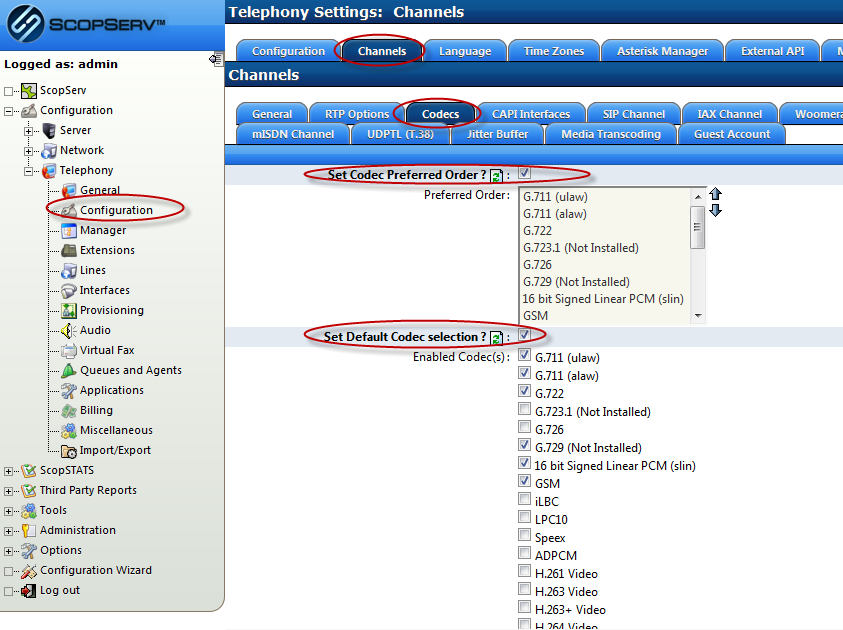
Navigate to Telephony>Configuration>Extensions>
Edit: <extension>>Phone Options
Check the G.729 CODEC option
If you want to use only G.729 then uncheck all other CODEC’s
Ignore the G.729 (Not Installed) warning as this only applies to software CODEC’s
Save
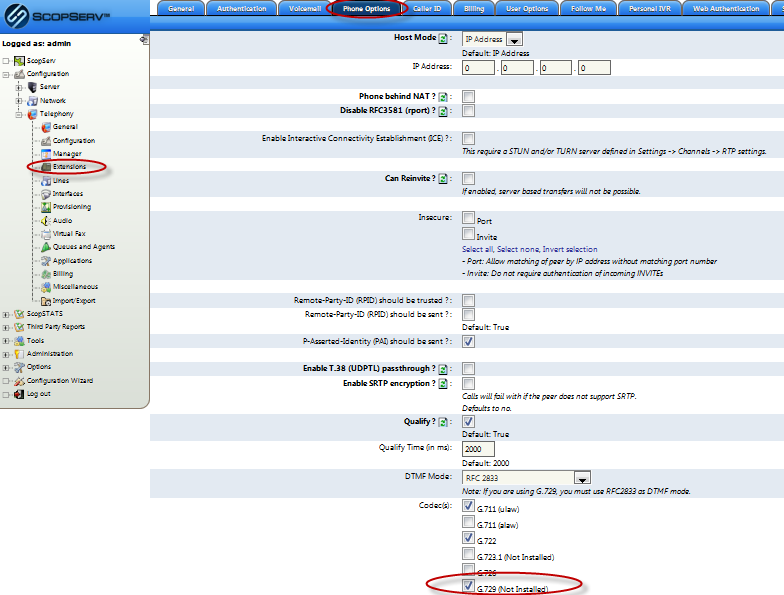
Navigate to Telephony>Configuration>Interfaces>VoIP Accounts
Edit: <VoIP Account>>Options
Check the G.729 CODEC option
If you want to use only G.729 then uncheck all other CODEC’s
Ignore the G.729 (Not Installed) warning as this only applies to software CODEC’s
Save
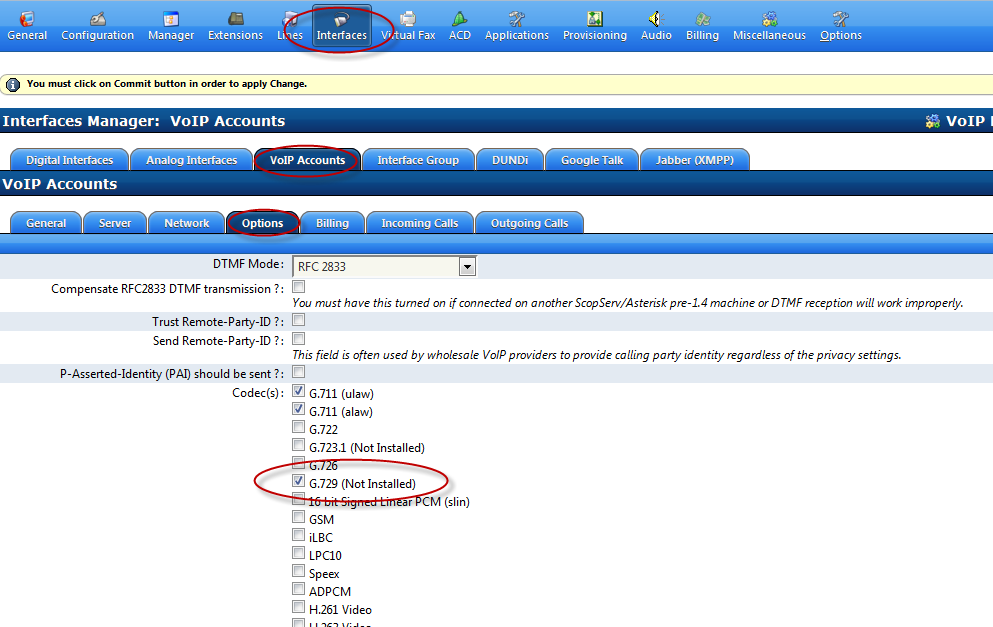
Navigate to Telephony>General
Commit
Edit: Services

Check the box to enable the Sangoma Media Transcoding (SNG TC) daemon
Apply Change
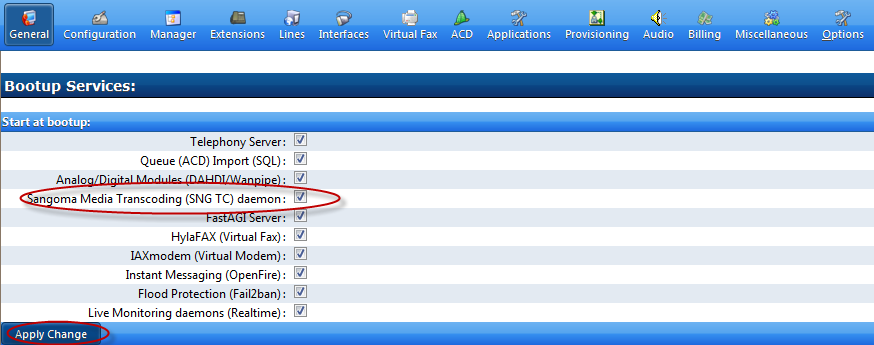
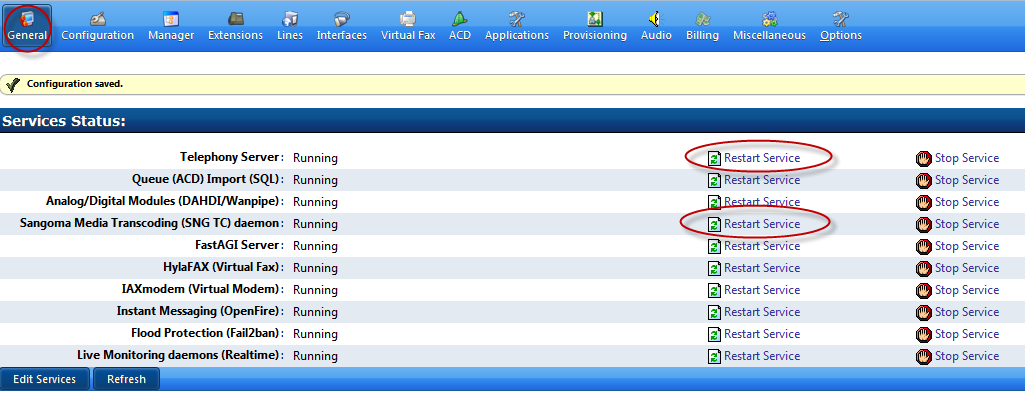
If the Sangoma Media Transcoding (SNG TC) daemon is not running then start it
If the Sangoma Media Transcoding (SNG TC) daemon is running then Restart Service
You must restart the Telephony Server for the Sangoma Media Transcoding (SNG TC) daemon to take effect.